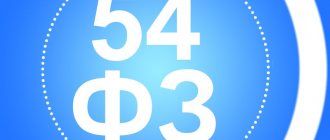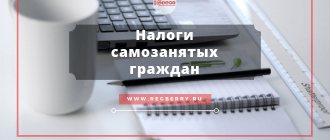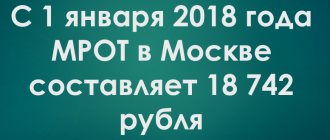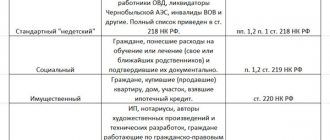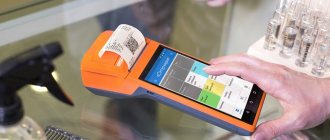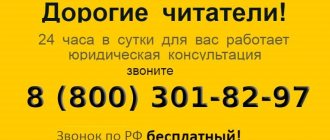Who are self-employed citizens?
These are individuals who receive income from activities in which there is no employer or employees hired under employment contracts.
These are also people who rent out their property. This income (rent) is called professional income. According to Federal Law No. 422-FZ dated November 27, 2018 (hereinafter referred to as the Law on the Self-Employed), these individuals can become payers of professional income tax (PIT). To do this, they must voluntarily register with the tax office and receive the appropriate status.
REFERENCE. Payment of NAP is an experiment that will last ten years: from January 1, 2021 to December 31, 2028 inclusive. At first, the experiment does not operate throughout Russia, but only in certain regions. And only from July 2021 it applies to the entire country.
When the law came into force
Self-employed and regions of the Russian Federation in which this law applies
People started talking about the law back in 2021. Then the government decided to bring tutors, freelancers, and nannies out of the shadows. For this purpose, a bill on a tax on self-employed people was developed. After numerous discussions and amendments, it was adopted by the Duma and signed by the President. This happened in November 2021. However, it came into force on January 1, 2021 - a month after publication.
Subsequently, the text of the document may be subject to changes. Thus, we are already talking about expanding the list of areas participating in the experiment. However, there are restrictions: rates and validity periods of the legal act will remain unchanged.
Which regions support the new special mode?
From January to June 2021, NAP can be paid in 23 regions. These include:
- cities of federal significance: Moscow, St. Petersburg;
- regions: Volgograd, Voronezh, Kaluga, Leningrad, Moscow, Nizhny Novgorod, Novosibirsk, Omsk, Rostov, Samara, Sakhalin, Sverdlovsk, Tyumen, Chelyabinsk;
- regions: Krasnoyarsk, Perm;
- autonomous okrugs: Nenets, Khanty-Mansi Yugra, Yamalo-Nenets;
- republics: Bashkortostan, Tatarstan.
When selling goods remotely (for example, over the Internet), the place of business is determined by the self-employed citizen. He must choose between the location of the seller and the location of the buyer. This is stated in the letter of the Federal Tax Service dated November 18, 2019 No. SD-4-3 / [email protected] (see “How can a self-employed person determine the place of business when trading via the Internet”).
Starting from July 2021, NAP is allowed to be applied in all constituent entities of the Russian Federation without exception.
In which regions can you become self-employed?
Initially, the project had pilot status and since 2021 has operated only in a few regions - Moscow, Moscow and Kaluga regions, Tatarstan. But already in 2021, the list of regions began to gradually expand and from October 2021, self-employed people can register throughout the country.
Registration does not matter for the application of NAP. For example, a person may be registered in one region, but provide services in another. Moreover, it is the subject of the Russian Federation where the self-employed person conducts his activities that is of decisive importance – it is his budget that will receive taxes.
The place of business is defined as the physical location of the taxpayer when performing work.
A person can change the region of activity only once a year (the direction of tax receipt will depend on this).
Who can become self-employed in 2021
Any citizen of Russia and other countries of the Eurasian Economic Union (Belarus, Armenia, Kazakhstan, Kyrgyzstan) has this right. The main thing is that he receives professional income in the region participating in the experiment on paying NAP (from July 2021 - in any subject of the Russian Federation).
ATTENTION. A person who plans to pay tax on professional income does not have to register as an individual entrepreneur. But if you already have the status of an individual entrepreneur or want to acquire it, then the status of an individual entrepreneur will not become an obstacle to paying NAP.
Fill out documents for registering an individual entrepreneur in a special service
There is a limit on the amount of professional income. If its value since the beginning of the current calendar year has exceeded 2.4 million rubles, the special regime cannot be applied to the self-employed. We'll have to wait until next year when the countdown starts from scratch.
Can a self-employed person be an employee? Yes, he has the right to combine his business and work under an employment contract. He will receive professional income from entrepreneurial activity, and salary from hired work.
Tax rates and payment deadlines
The law provides several types of rates for the payment of professional income received from the sale of goods or services:
- four percent – for individuals engaged in self-employment;
- six percent - for entrepreneurs who are engaged in official business activities, as well as for legal entities that fall under the regulation of the law.
If the payer receives income in different amounts and terms, then the rate is set separately. The tax payment period is one calendar month. Payment must be made no later than the twenty-fifth of each month.
The rate is calculated by the tax office using approved formulas. The amount obtained as a result of calculations should not exceed ten thousand for the first month.
The tax is paid only after receiving the appropriate notification from the tax service. If the amount is less than one hundred thousand, then it is added to the payment for the next month.
Types of activities for the self-employed in 2021
What can a self-employed person do? Tutoring, cleaning premises, preparing homemade baked goods, providing cosmetologist services, etc. Also, owners of apartments and rooms for rent often switch to paying NAP.
At the same time, there are types of business that do not give the right to become a professional tax payer. The black list includes:
- sale of excisable goods;
- sales of products subject to mandatory labeling (tobacco products, medicines, shoes, etc.);
- resale of goods, property rights (except for property that was used for personal, household and other similar needs);
- extraction and (or) sale of minerals;
- intermediary services on the basis of commission, commission or agency agreements (except for the situation when the intermediary uses cash register equipment registered by the principal, principal or principal);
- services for delivering goods and receiving money from the buyer (except for cases when cash register equipment registered by the seller of the goods is used).
What income is taxed
As stated in Article 6 442-FZ on tax for the self-employed, the object of taxation is income from the provision of services, performance of work or sale of goods. However, not every income will be subject to this tax.
Firstly, the salary you receive at your main place of work will not be subject to additional taxation, including for civil servants. Along with this, even work for an existing employer and other employers over the last 2 years under civil contracts is also not subject to a special tax regime.
In my opinion, this measure of the legislator is designed to combat abuses in which employers and employees, in order to optimize the tax burden, did not transfer from labor relations to civil law ones.
Secondly, the sale of your apartment, cottage, garage or other real estate, as well as your personal car or other vehicles. This category also includes the assignment of rights (for example, rights to housing under construction under the DDU). We also include in this category the sale of any other property used by a citizen for personal or family purposes.
Finally, mediators, notaries, lawyers, arbitration managers and appraisers also cannot switch to this tax regime, since income from their professional activities is also excluded from taxation.
Here are other important incomes that are not subject to this tax in accordance with paragraph two of the same article:
- from the sale of shares in the authorized (share) capital of organizations, shares in mutual funds of cooperatives and mutual investment funds, securities and derivative financial instruments;
- from conducting activities within the framework of a simple partnership agreement (joint activity agreement) or a property trust management agreement;
- from the activities specified in paragraph 70 of Article 217 of the Tax Code of the Russian Federation, received by persons registered with the tax authority in accordance with paragraph 7.3 of Article 83 of the Tax Code of the Russian Federation (meaning nannies, tutors, etc.);
- from the assignment (assignment) of rights of claim;
- in kind.
Income in kind (non-monetary) is not subject to this tax
In general, the list of exceptions is not too large, and each specific position seems justified and corresponds to the goals of introducing a new tax regime.
How to become self-employed in 2021
Registration in the My Tax application
To become a tax payer, you must submit an application through the “My Tax” mobile application.
First you need to download this application for free from the Federal Tax Service website and install it on your smartphone, tablet or computer. Then, using the same device, take a scan of your passport and your photo. Then go through a simple registration procedure in the application. A paper application with the personal signature of a self-employed citizen is not required.
REFERENCE. You can register as self-employed in another way - through the taxpayer’s web account of the “Professional Income Tax”. In it you need to indicate the TIN and access code to the taxpayer’s personal account. In this case, you will not need any passport data, or a photo, or a paper application.
Tax officials will check the information provided. If everything turns out to be in order, the inspectors will send the citizen a notification about registration. It will come through the My Tax app.
Transition to self-employed from other tax regimes
It is possible that before the transition to the NAP, a person had already received professional income and paid another tax on it: UTII, a single tax according to the simplified tax system, a single agricultural tax, a tax according to the personal income tax or personal income tax. Then, by registering in the “My Tax” application, an individual is obliged to abandon the previous tax regimes. The corresponding application must be submitted to the Federal Tax Service at the place of registration or place of business. This must be done within one month from the date of registration as self-employed. If the deadline is missed, the inspectors will cancel the registration.
Submit a notice of refusal from the simplified tax system, UTII or unified agricultural tax via the Internet Submit for free
IMPORTANT. Is it possible to transfer only part of the business income to NAP, and leave the other part to the simplified tax system, UTII, Unified Agricultural Tax, PSN or the main system? No you can not. Combining the professional income tax with the listed tax regimes is unacceptable (subclause 7, clause 2, article 4 of the Law on the Self-Employed). It’s another matter if an individual is engaged in business and at the same time works for hire. In this case, his salary will be subject to personal income tax, and professional income will be subject to NPT.
What does this law provide?
Those applying this regime are exempt from paying:
- insurance premiums;
- personal income tax (NDFL);
- VAT (except for the case of import of goods into Russia).
Law on individual entrepreneurs - what the Federal Law provides and what are the penalties for non-compliance
This is explained by the purpose of introducing a tax on professional income - to reduce the tax burden on self-employed people with low incomes.
Let's look at how to register self-employment for the 2021 tax year. The legislator has made an attempt to simplify as much as possible the registration of self-employed people and the payment of tax payments. For this purpose, special software “My Tax” has been developed. It works from smartphones, tablets, and computers. It can be downloaded from the official website of the Tax Inspectorate.
Note ! Registration of a citizen in the Tax Office building is not provided for by this regime. The process goes through the specified electronic application or the personal account of the self-employed.
When registering through “My Tax,” you must fill out an application, provide your passport information, and take your photo. All steps are described in detail in the application, and completing them is not difficult. Through it you can switch from other preferential regimes to NAP.
Also, with the help of “My Tax”, checks are created and sent to the client by phone or e-mail. At the same time, information is sent to tax authorities. At the end of each month, they send a notification with the amount of tax that must be paid.
If a self-employed person returns the money to the client, the tax amount is reduced. You just need to document this operation and notify the tax office.
Mobile application "My Tax"
How much will self-employed people have to pay according to the Federal Law?
The tax is calculated on the amount of revenue received. Her sources:
- sale of homemade goods (souvenirs, knitted items);
- realization of rights to property (renting an apartment);
- provision of services (tutoring, consultant services);
- completed work (apartment renovation).
The legislator has provided two rates.
If money is received from the population (individuals), then 4% is deducted. From 10 thousand it will be 400 rubles. If the payment came from an individual entrepreneur or a legal entity, then the rate increases to 6% (600 rubles from 10 thousand).
If the monthly tax is less than 100 rubles, it is not charged. But the obligation remains in force. The accrued amount is simply transferred to the next month.
A self-employed person may allow the tax office to send an order to write off funds to his bank. And he will transfer the amount of tax from the current account.
The adopted law provides for a number of tax deductions. But their size is no more than 10 thousand. The tax base (income) can be reduced when working with citizens by 1%, with organizations, individual entrepreneurs - by 2%.
Let's look at an example of how much a self-employed person will pay in 2019. A self-employed man made repairs for a citizen for 30 thousand. The tax on this amount is 30000*4% = 30000*0.04 = 1200 rubles.
The 1% tax deduction will be:
30000*1% = 30000*0.01 = 300 rubles.
Then the reduced tax amount is:
1200-300 = 900 rub.
Taking into account the tax deduction, the tax amount was 900 rubles.
Note ! However, you do not need to make such calculations yourself. They are created in the My Tax application.
Deregistration of a self-employed person
To deregister as an NPT payer, you need to submit an application through the “My Tax” application. This is done in one of the following cases:
- Professional income since the beginning of the year has exceeded 2.4 million rubles.
- The citizen began to engage in activities from the “black” list.
- A self-employed person now has hired workers.
- The citizen has lost the desire to be a NAP taxpayer.
Inspectors will deregister a self-employed citizen on the day the application is submitted.
It may happen that a person continues to consider himself self-employed, although his income has exceeded the limit, he has hired employees, or he has started running a business from the “black” list. If employees of the Federal Tax Service discover this, they themselves will stop registering an individual as an NPT payer, without waiting for an application from him.
Taxation for self-employed citizens in 2021
What income is taxed
NPA is paid on professional income received within one calendar month. There are two rates.
If the client is an individual without individual entrepreneur status, then the rate is 4%.
If the client is an organization or individual entrepreneur, then the rate is 6%.
When calculating tax, income is not taken into account:
- from the sale of: real estate, transport, personal property, securities, derivative financial instruments, shares and shares in the authorized capital;
- from the transfer of rights to real estate (except for rental housing);
- from activities under a simple partnership agreement or trust management of property;
- from the provision of services under a civil contract, if the customer is the contractor’s employer, or a former employer from whom the self-employed citizen left less than two years ago;
- from the assignment and assignment of rights of claim;
- received in kind;
- from the arbitration department, from the activities of a mediator, appraiser, private notary, lawyer.
How income is accounted for
Money from the sale of goods (works, services, property rights) are recognized on the day they are received.
Revenue received under a commission agreement (order, agency agreement), when the intermediary participates in the settlements, is recognized on the last day of the month in which the money is received by the intermediary.
Income that was previously taken into account under any tax system before the transition to NAP does not need to be reflected. This rule applies even if the money arrived after such a transition.
Tax deduction for self-employed
It is determined according to the following rule:
- if professional income is received from an individual, the deduction is equal to 1% of the amount of income;
- if professional income is received from an individual entrepreneur or organization, the deduction is equal to 2% of the amount of income.
The deduction amount, calculated on an accrual basis from the moment of switching to NAP, cannot exceed 10,000 rubles. for the entire period of activity as a self-employed person.
An individual who has lost the status of an NAP payer without spending all 10,000 rubles. deduction, retains the right to use the balance. It will be restored upon re-registration in this status. In a situation where 10,000 rub. have been spent, you cannot use the deduction again.
IMPORTANT. Temporary rules have been introduced for NPAs payable from 1 July to 31 December 2021. During the specified period of time, 12,130 rubles are added to the balance of the “regular” deduction. The received amount can be used unlimitedly, regardless of revenue. Due to the deduction, the debt on the NAP is paid off, and the remaining part goes to pay the current tax. The balance of the deduction is carried over to 2021 within the limit: no more than the balance that was listed as of June 1, 2021. Anyone who became self-employed for the first time after June 1, 2021 will be able to transfer no more than RUB 10,000 to 2021. (See “New “anti-virus” benefits: deduction for the self-employed, increase in child benefits, rent discount”).
How to calculate tax for self-employed people: example
Teacher Aleksandrov was registered as a NAP payer at the beginning of February 2021.
In February, he conducted classes at the training center and received payment in the amount of 150,000 rubles. In the same month, Alexandrov provided tutoring services to private clients, and earned 50,000 rubles from this.
The deduction amount is equal to RUB 3,500 ((RUB 150,000 x 2%) + (RUB 50,000 x 1%)).
The NPA payable for February 2021 will be 7,500 rubles ((150,000 rubles x 6%) + (50,000 rubles x 4%) – 3,500 rubles).
In the future, Alexandrov will be able to apply a deduction in the amount of no more than 6,500 rubles (10,000 rubles - 3,500 rubles).
Paying tax for self-employed people
The tax authorities calculate the amount of NAP payable. Data for calculations is provided by a self-employed citizen. He must do the following:
- In the “My Tax” application, indicate how much professional income and from whom it was received in cash, credited to a bank account or to a card.
- Create a receipt and send it to the buyer electronically or in paper form. The receipt is generated in the “My Tax” application, so there is no need to buy cash register equipment. Deadline for transferring a check: for payments in cash or electronic means of payment - immediately after receipt of money; for other forms of payment - no later than the 9th day of the month following the month in which the money was received.
IMPORTANT. The professional income tax transferred in 2019 will be returned to payers, including those who have already been deregistered. From the Decree of the Government of the Russian Federation dated May 29, 2020 No. 783, it follows that there is no need to write an application. It is only necessary that a bank card be linked in the “My Tax” application (see “New “anti-virus” benefits: deduction for the self-employed, increased child benefits, rent discount”).
At the end of the month, inspectors will calculate the amount of NPA payable. They will report the result to the self-employed individual no later than the 12th day of the month following the end.
Tax must be paid no later than the 25th day of the month following the end. If the amount payable is less than 100 rubles, then it will be added to the tax for the next month. Overpayments can be returned or offset against future periods.
ATTENTION. When receiving professional income, the NPT payer is exempt from value added tax (except for VAT on imports), personal income tax and insurance premiums. But a self-employed person is required to pay taxes on personal property: land, transport and personal property taxes.
Submit a notification and submit all declarations for individual clients with a 50 percent discount
Restrictions
Among those who are subject to the law on the self-employed, all citizens who provide services to the population independently, without the involvement of hired workers, are identified. To receive benefits, they must voluntarily register with the Federal Tax Service.
The types of activities for which an individual has the right to pay tax at a discount are also listed in general terms. Among them:
- care for those in need (people over 80, the sick and disabled);
- cleaning of residential premises;
- private construction work;
- cosmetology and hairdressing services, manicure and pedicure at home;
- equipment repair;
- conducting excursions;
- conducting paid training sessions.
The above list does not include those who work primarily as freelancers - programmers, designers, etc. It is not yet known whether they will be added later.
A specific list of professions is in the law, but in the “My Tax” application there is a complete list of types of activities that fall under self-employment.
The listed types of activities for the self-employed include anyone who works alone, offering household services and purchasing goods to interested parties. At the same time, the work performed must be regular - benefits do not apply to one-time assistance.
The citizen will not be deprived of the right to carry out other types of work - simply different regimes and norms will apply to them. Among them:
- sale of real estate and movable property;
- sale of shares in the authorized capital, shares in funds and mutual funds, securities, production and financial instruments;
- provision of services and performance of work in accordance with civil law contracts, when the customer is the current or past employer of the self-employed;
- sale of labeled and excisable products (alcohol, gasoline);
- extraction or use of minerals;
- resale of goods and property rights;
- work as an intermediary;
- delivery of goods with acceptance of payment transferred to third parties;
- paid transfer of rights to real estate (with the exception of renting out an apartment or renting living space).
The law also does not apply to notaries and lawyers, since their activities are regulated in a special manner and in accordance with other regulations.
Payment can be made in cash or electronic money. The main thing is to issue the client a check generated in the utility from the Federal Tax Service. The check itself can be sent:
- to the client’s cell phone number or mailbox;
- in the form of a QR code.
Violators who fail to submit information to the tax office in accordance with all conditions and on time will be held accountable. The main penalty is a fine of 20% of the settlement amount. For repeated non-compliance with the standards in the next 6 months from the date of the first violation, the fine will increase to 100% of the calculated amount. But in the first year of the new act, no one will be fined.
Payment of the fee is made at the place of activity. It must be indicated in the “My Tax” application. From this utility, the payer will send money to the budget, receiving in response a notification with payment details and the amount of tax.
Tax officials will also, upon request of the payer, be required to provide him with a certificate of income. Such a document may be required, say, to receive benefits, apply for a loan, etc. Thanks to this, an official employee and an individual entrepreneur are equal in opportunities to the self-employed.
Pros and cons of self-employment
Pros:
- low tax rate;
- simple, convenient and free registration;
- no need to purchase a cash register;
- there is no need to pay insurance premiums;
- There is no need to keep records and submit reports.
Minuses:
- You cannot hire employees;
- The period when a citizen pays NAP is generally not counted towards the insurance period. And only if a person voluntarily makes pension contributions, the time of “self-employment” is included in the length of service when assigning a pension;
- expenses do not reduce the taxable base;
- This regime is allowed to be applied as long as revenue from the beginning of the year does not exceed 2.4 million rubles:
- You can become self-employed in 2021 only in 23 regions.
Keep records and submit all individual entrepreneur reports via the Internet
Advantages of the law on self-employed
The adoption of the law on the self-employed allowed citizens engaged in the production of their own goods or providing private services to come out of the shadows, become legalized and receive all the benefits of a “white-label” job.
Now they can freely:
- conclude civil contracts with clients, whether individuals or companies;
- accept payments to an account or card without fear of blocking by banks and tax fines;
- provide payment receipts to your clients;
- operate openly, under your own name or brand;
- use health insurance without paying contributions to the Social Insurance Fund and Pension Fund;
- defend your interests in court, etc.
Moreover, the law established the lowest tax in the country for the self-employed with a rate of 4-6% and guaranteed to fix the tax rate at this level until 2028 inclusive (clause 3 of Article 1 of the Federal Law on self-employed people).
And although today it is not easy for the self-employed to develop their business and even get a loan (there are other pitfalls of self-employment), the prospects are quite acceptable. This is confirmed by the number of registered citizens. According to the latest estimates, at the beginning of October 2021, about 1.2 million self-employed people are active in Russia.
To summarize the above, we recall that the main law for the self-employed is Federal Law No. 422 of November 27, 2018, which established a new tax regime (NTR). The law provides the concept of a self-employed person, his activities and the income received, from which he must contribute to the budget.
The adoption of the law on self-employed people has made it possible for a large number of Russians to legalize their business and actively develop it without fear of tax fines and blocking of accounts. And the establishment of a low tax rate, fixed for 10 years in advance, allows the self-employed not to worry about increasing the share of their contributions to the treasury.
(Visited 380 times, 17 visits today)
Self-employed in the Russian Federation
Self-employedv.rf is an information portal for self-employed people. Relevant and interesting information, answers to important questions and solutions to non-standard problems of the self-employed.
The main differences between individual entrepreneurs and self-employment
Let's compare the most significant parameters in the work of a tax payer and an individual entrepreneur in a different mode (see table).
Comparison of the activities of a self-employed person and an individual entrepreneur in a different mode in 2021
| NAP payer | Individual entrepreneur in a different tax regime |
| Place of business | |
| 23 regions | UTII and PSN are regions where these special regimes have been introduced in relation to specific types of activities; OSNO, simplified tax system and unified agricultural tax - the entire territory of Russia. |
| Income restrictions | |
| 2.4 million rubles. year to date | Depends on the tax regime: “simplified” - 150 million rubles. year to date; PSN - 60 million rubles. year to date; the rest - without restrictions. |
| Limitations on the number of employees | |
| You cannot hire a single employee under an employment contract | Depends on the tax regime: “simplified” - no more than 100 people; UTII - no more than 100 people; PSN - no more than 15 people; the rest - without restrictions. |
| Tax rate | |
| 4% of revenue received from individuals; 6% of revenue received from organizations and individual entrepreneurs | Depends on the tax regime. Under the basic system, personal income tax is 13% of the difference between income and professional deductions, VAT is 20% of the difference between accrued tax and deductions; with “simplification” - in the general case, 6% of income or 15% of the difference between income and expenses; for PSN - in general, 6% of potential income; for UTII - 15% of imputed income; for Unified Agricultural Tax - in general, 6% of the difference between income and expenses plus VAT on a general basis. |
| Payment of insurance premiums | |
| No need to pay | Need to pay: fixed contributions “for yourself”; contributions from employee salaries. |
| Reporting | |
| No need to introduce | You need to submit: — tax returns (for everyone except individual entrepreneurs with a patent); — reporting on insurance premiums from employee salaries; — reporting to the Pension Fund of the Russian Federation on insured persons and personnel activities (if there are employees); — statistical reporting (in some cases). |
| Record keeping | |
| No need to lead | Need to lead: — tax accounting; — personnel records (if there are employees). Accounting is carried out at will. |
| Cash register | |
| Not required | In general, PSN is not needed (with the exception of some types of business, for example, hairdressing services). Under other tax regimes, in most cases, it is needed by everyone who makes payments to individuals (except for delivery trade and a number of other exceptions). |
| Formation of insurance experience for a pension | |
| In general, there is no length of service. If a person voluntarily pays pension contributions (in 2021 - 32,448 rubles per year), then the length of service is formed. | Experience is being formed |
| Payment of sick leave benefits | |
| Not provided | In general, it is not provided. If an individual entrepreneur voluntarily pays social insurance contributions “for sick leave” (in 2021 - 4,221.24 rubles per year), then benefits are paid. |
Freely calculate contributions “for yourself”, taxes according to the simplified tax system and UTII, fill out payments for taxes and contributions
Where are the origins of the bill?
According to statistics, slightly less than half of the employed adult population are self-employed citizens. These are the people who receive compensation for their services directly from the customer. They do not need an intermediary in the form of an employer. That is, they work for themselves.
There are those who influence other citizens through their activities. These include tutors, nurses, nannies and some others. Their labor is subject to taxation in accordance with the law.
Registration with the tax service is voluntary. Nobody is forcing you to do this. At the same time, benefits are provided to certain categories of workers.
The adoption of a law on taxation of self-employed citizens is a logical decision for the state. They do not bring additional money into the treasury, which contributes to a decrease in the state budget. Pension contributions are not being made, which will have a detrimental effect on the lives of older people. The only way out is to streamline the activities of the self-employed.
What to choose in the end - individual entrepreneur or self-employment?
If a novice businessman works in a region where it is allowed to pay NAP, he has a choice: obtain self-employed status or become an entrepreneur in a different mode. Each case is individual, and it is impossible to give universal advice.
In practice, the status of individual entrepreneurs and tax regimes not related to the payment of non-refundable income are chosen by those who plan to conduct business on a grand scale. Namely, to increase turnover, hire staff, expand the sales network, etc. But the self-employed in 2021, as a rule, are people for whom income is a side income. These are company employees who do something else in their free time (baking for sale, grooming animals, etc.). Another example is housewives. For them, the main thing is child care, and small business (selling handmade jewelry, cloth dolls, etc.) is an addition.
Please note: newly registered entrepreneurs can use the Kontur.Elba web service for free for a year, which allows you to conduct all necessary accounting and submit reports via the Internet.
List of species
Perhaps the legislator initially planned to draw up and include in Federal Law 422 a list of activities for the self-employed, but it was decided to abandon this idea. Traditionally, this term was understood as citizens receiving income that cannot be accounted for or is difficult to account for.
And without a legally approved list, it is clear that there are certain areas of activity for the self-employed that are easy to determine:
- freelancing;
- translations;
- tutoring;
- provision of household services;
- provision of nanny or governess services;
- provision of transport and transportation services;
- sale of goods, etc.
